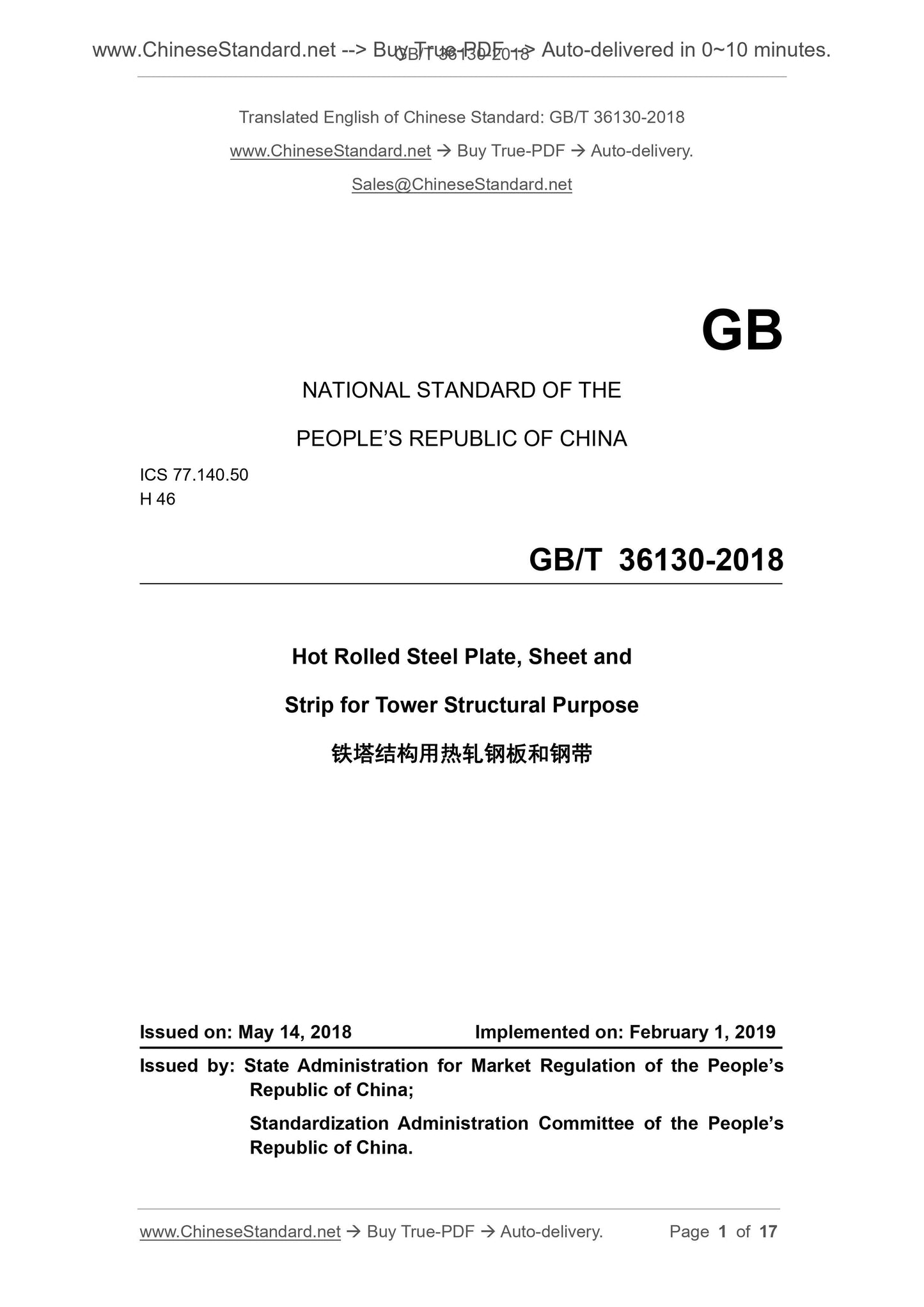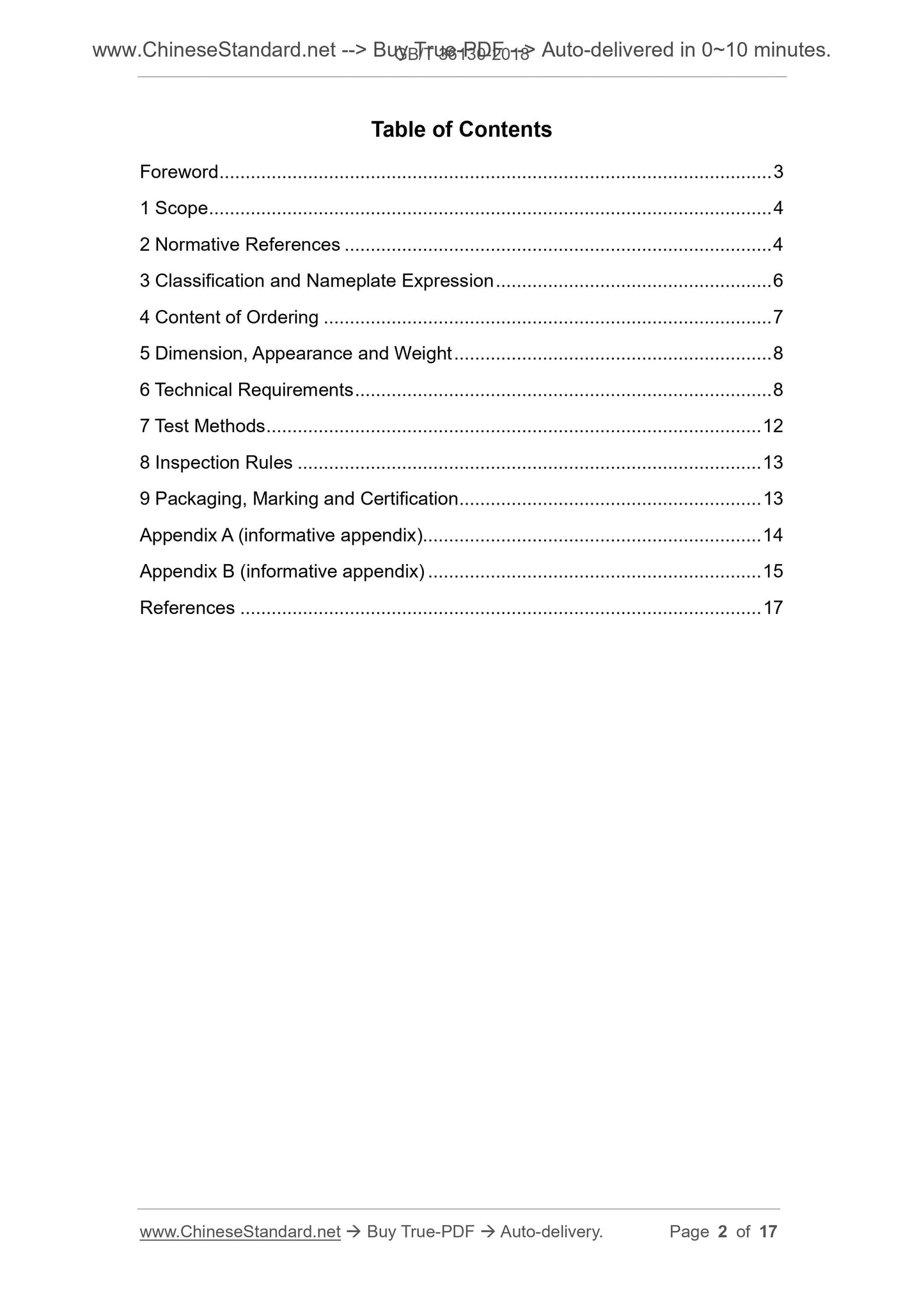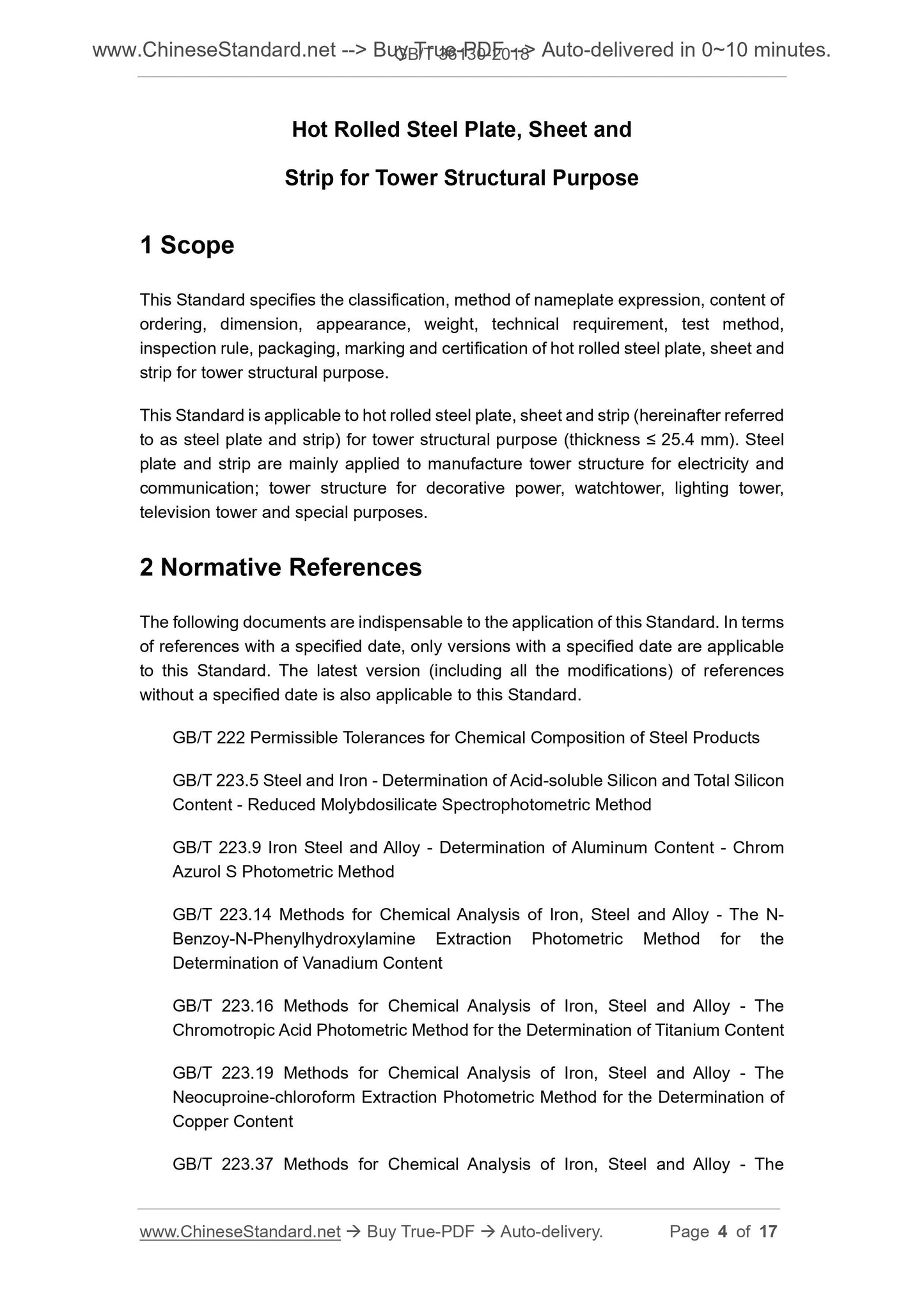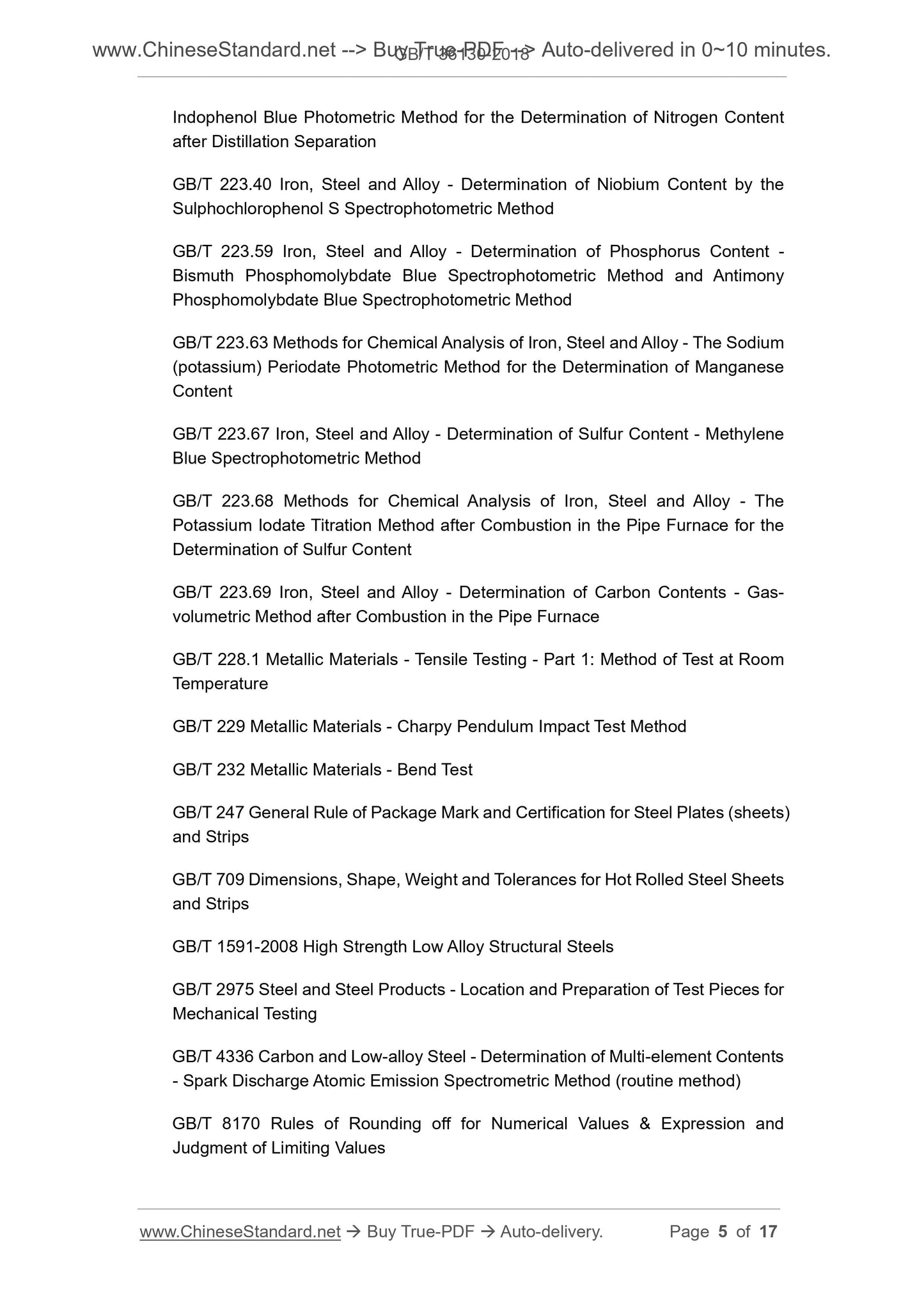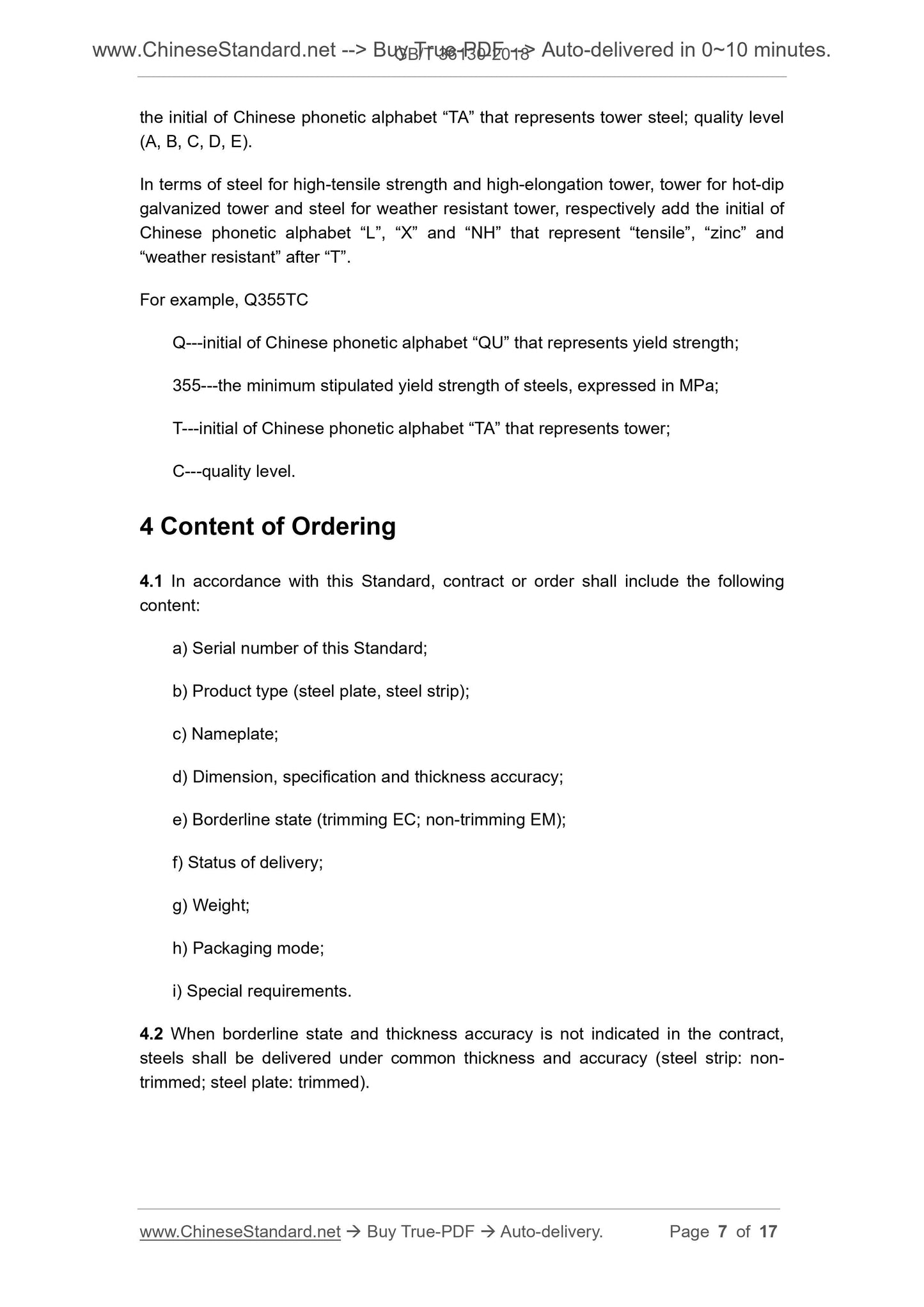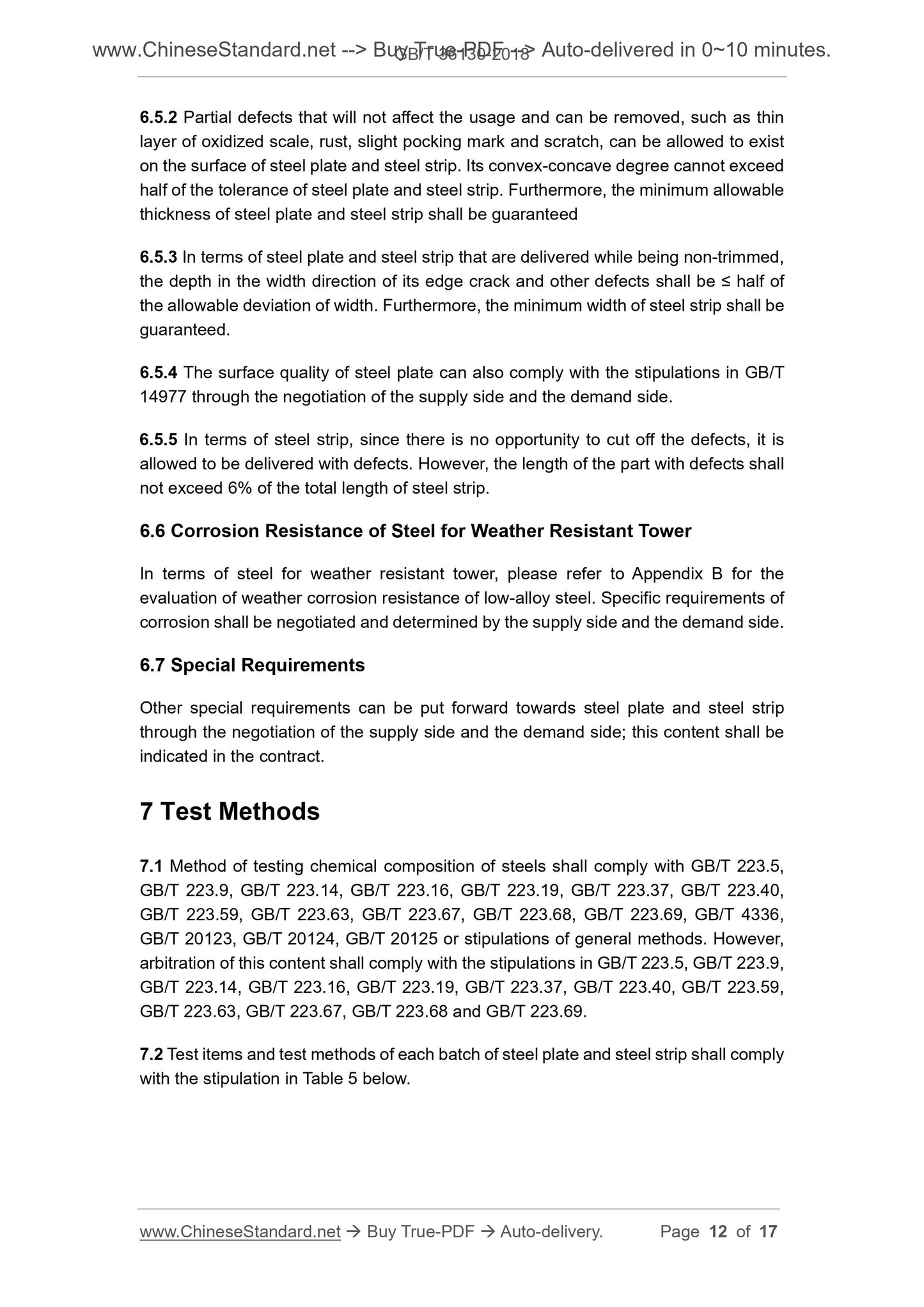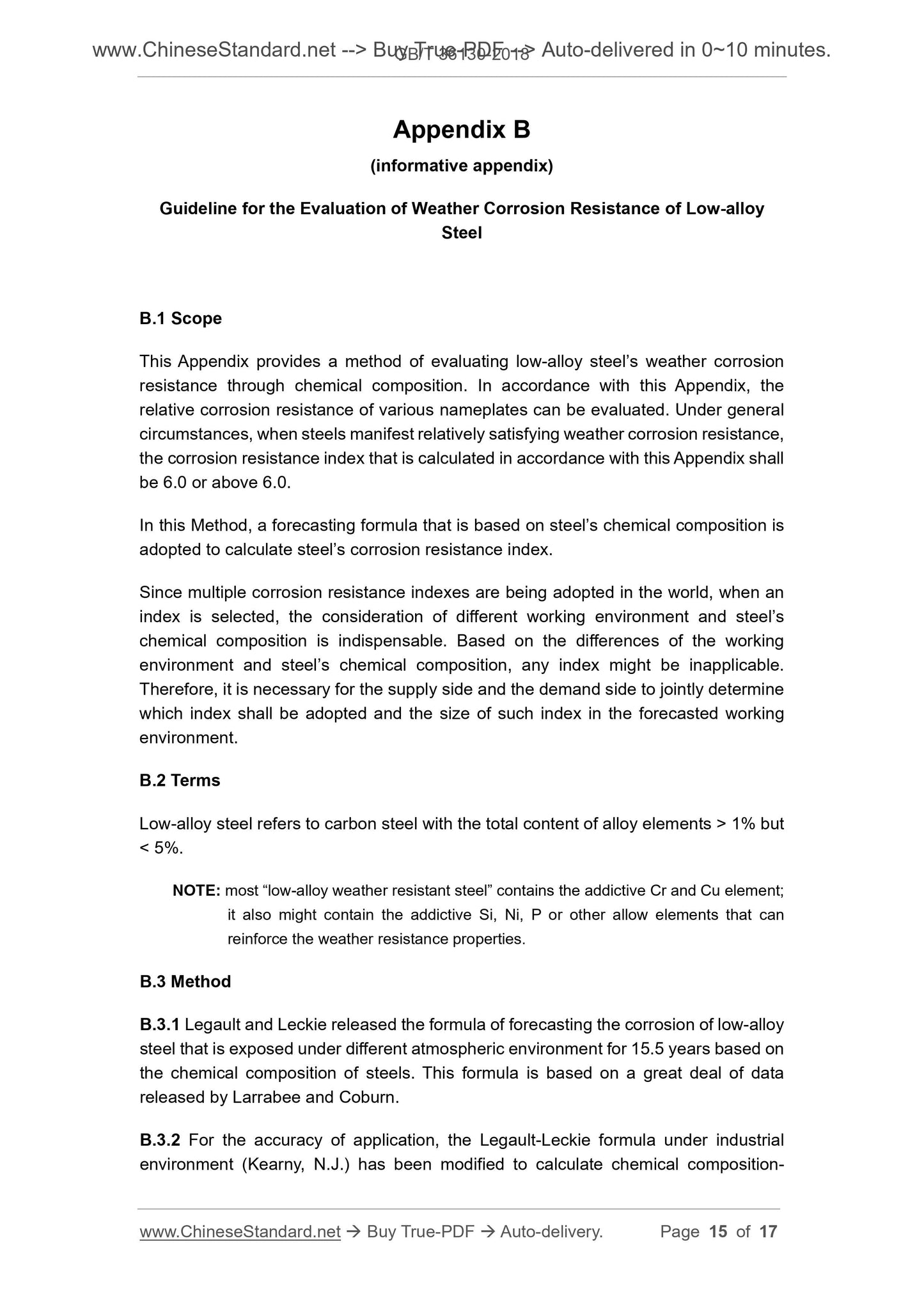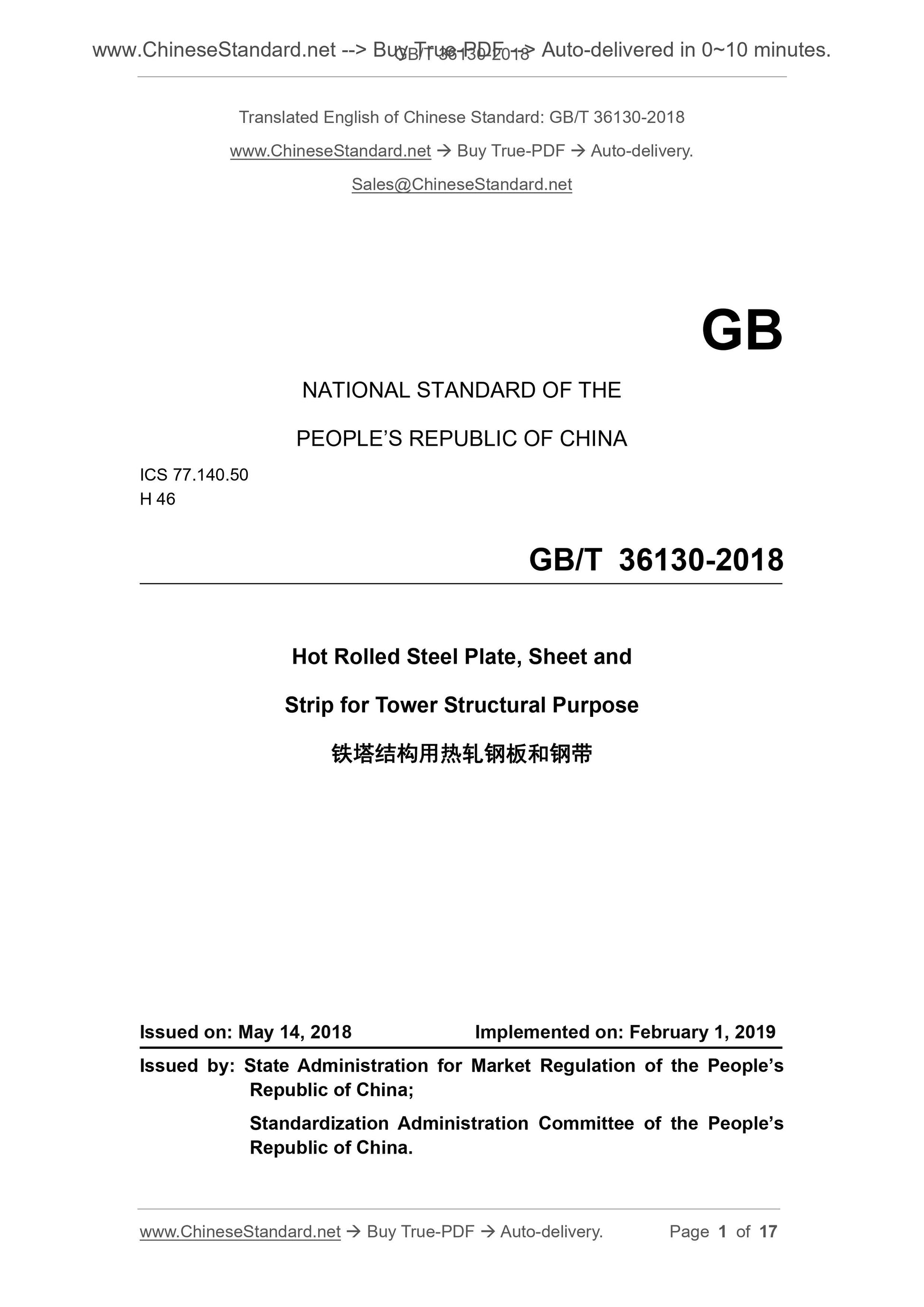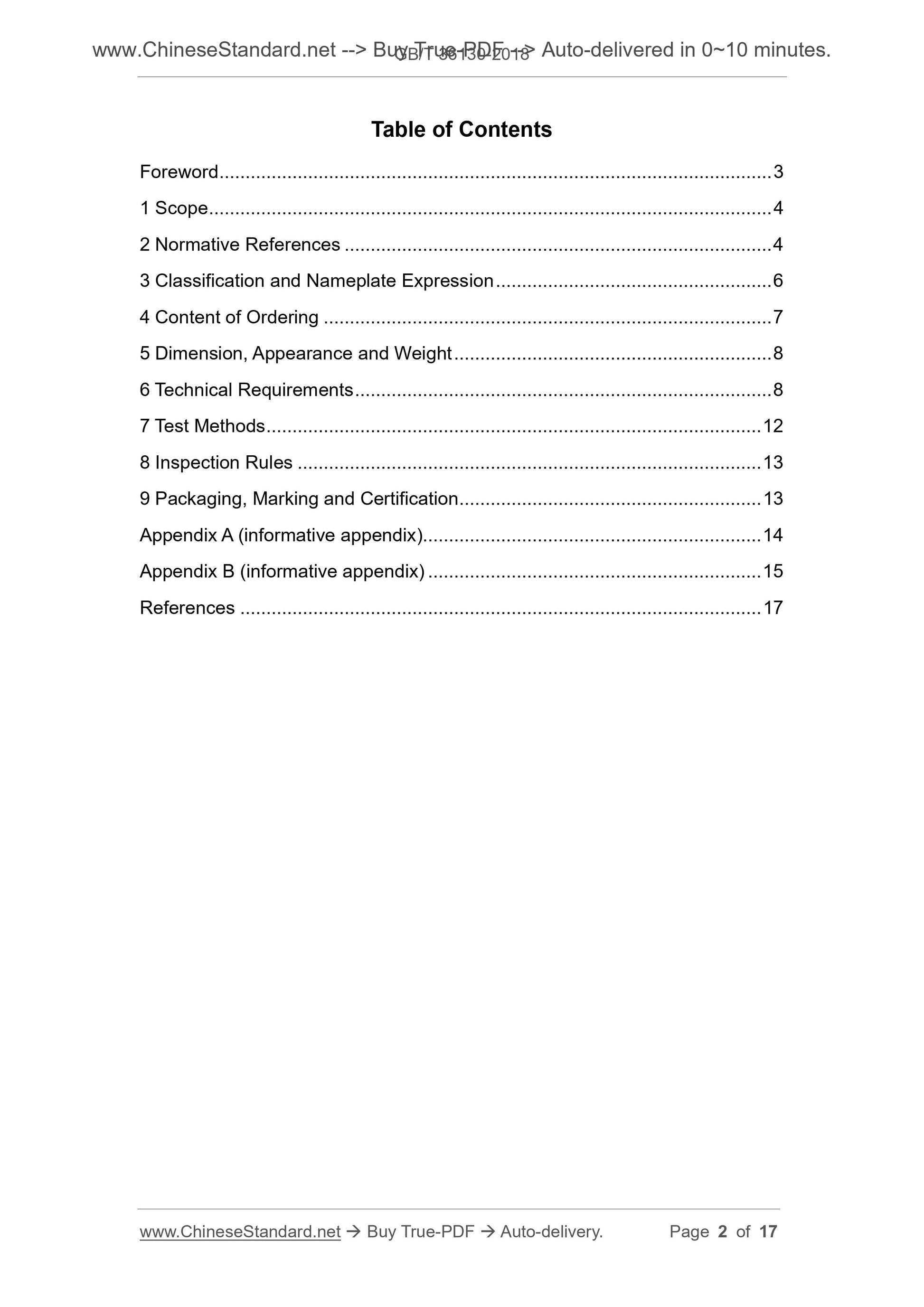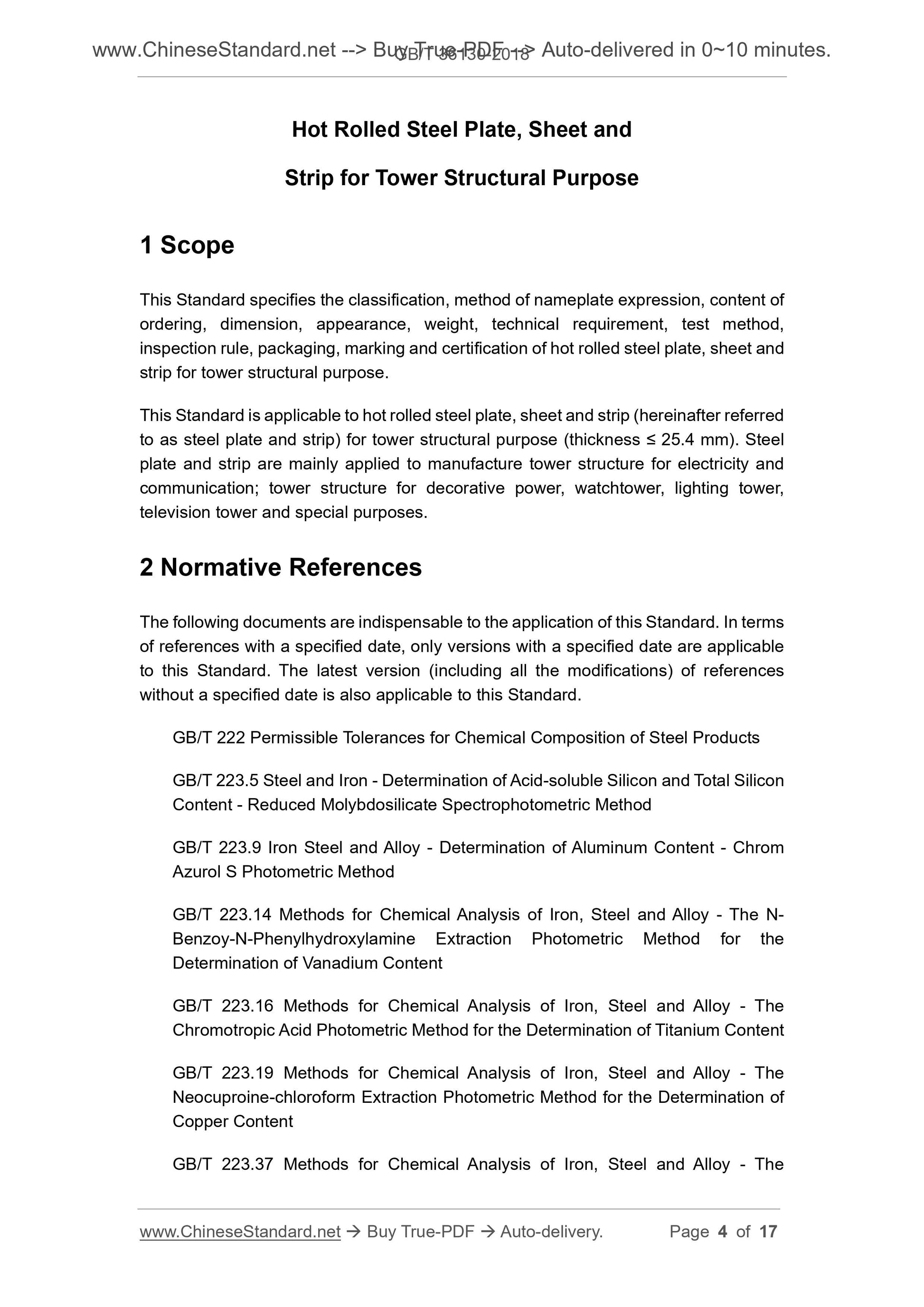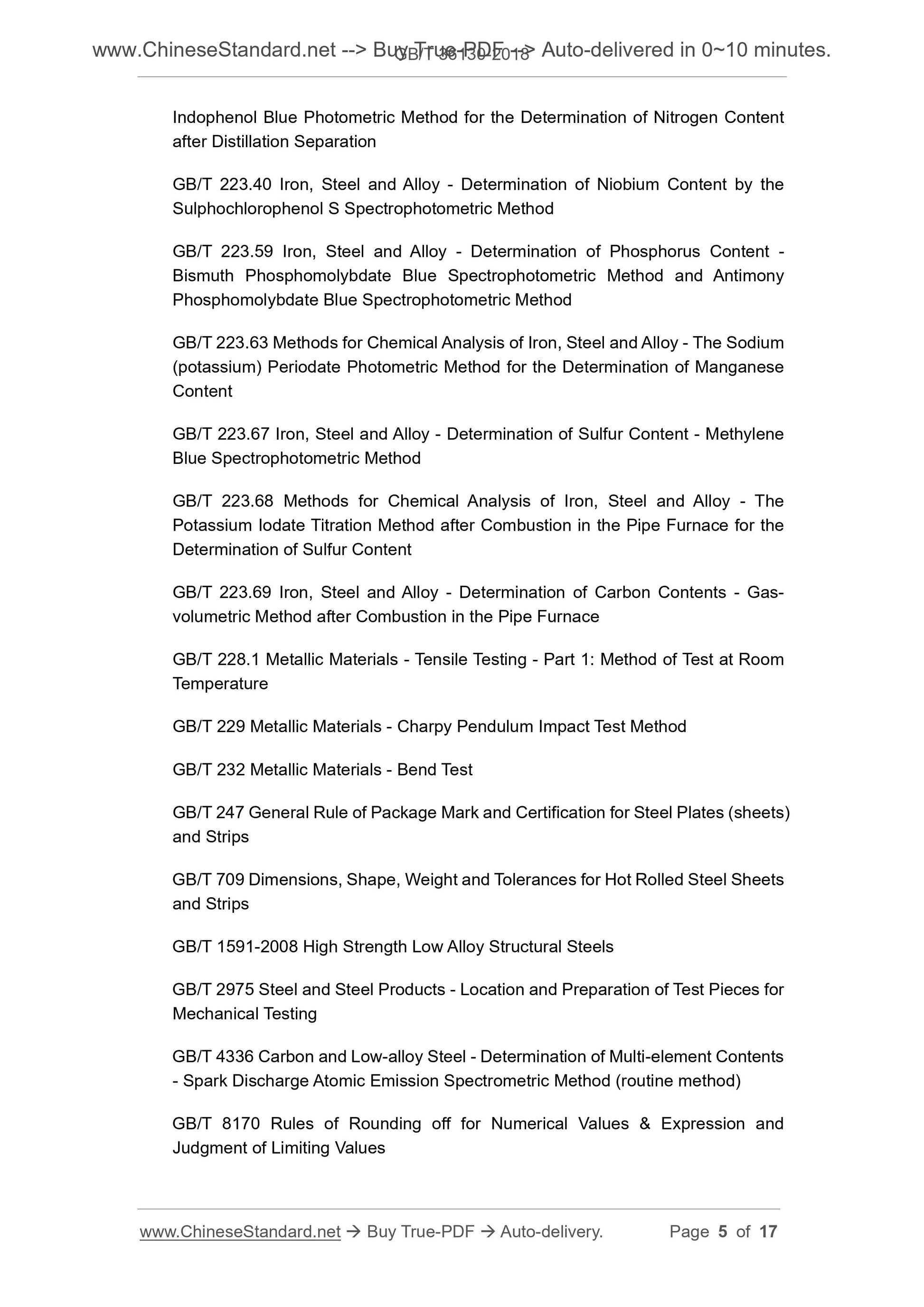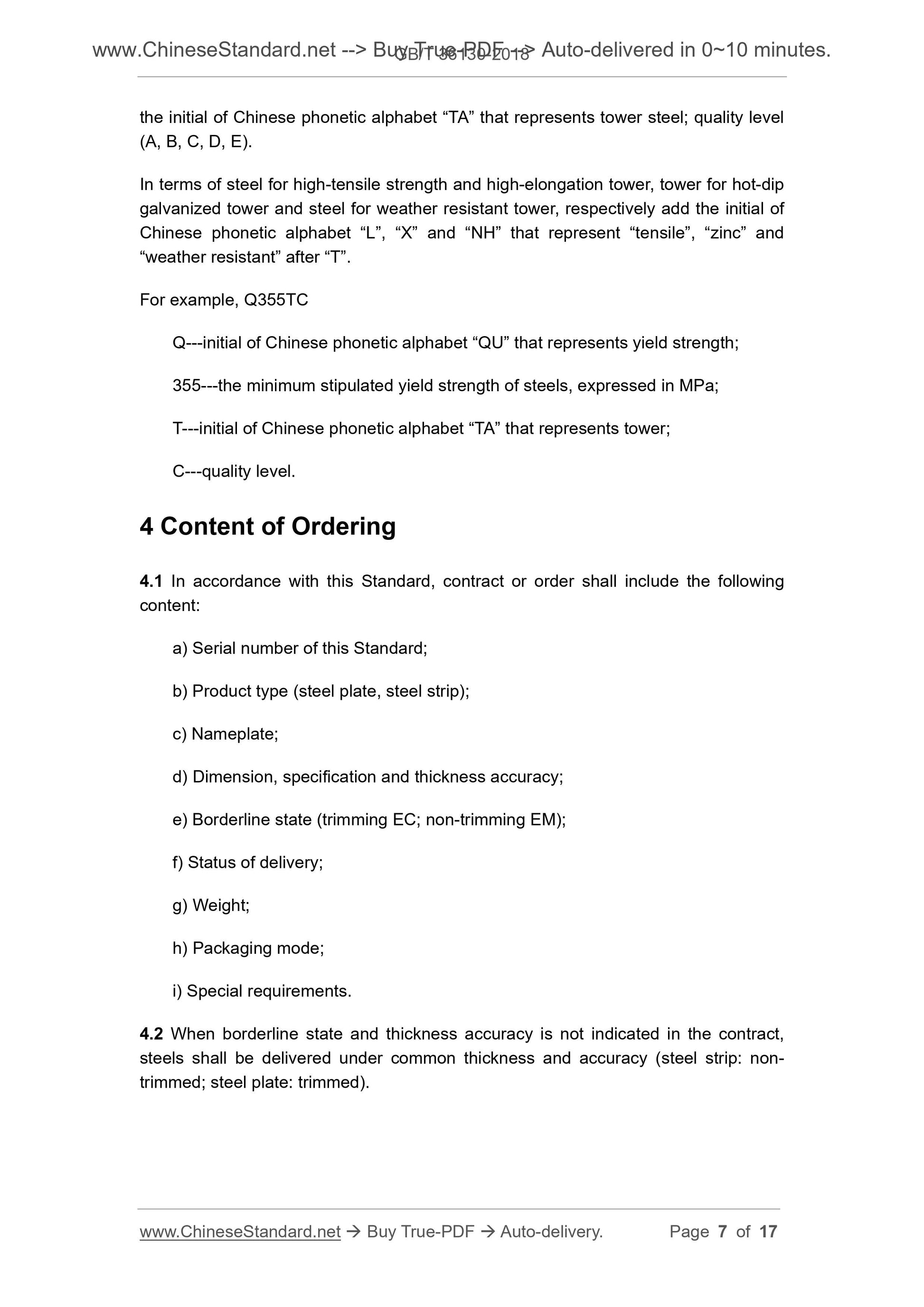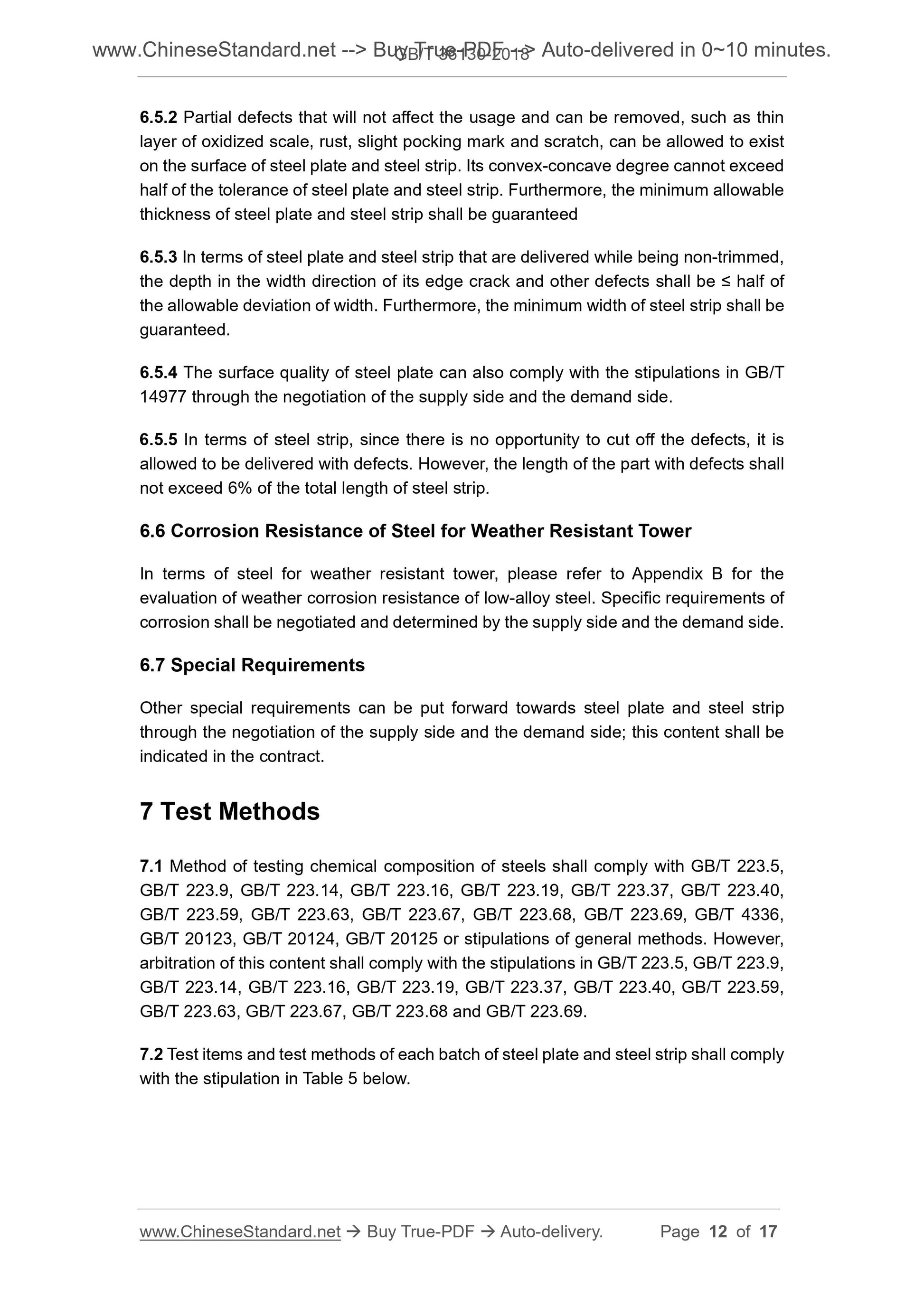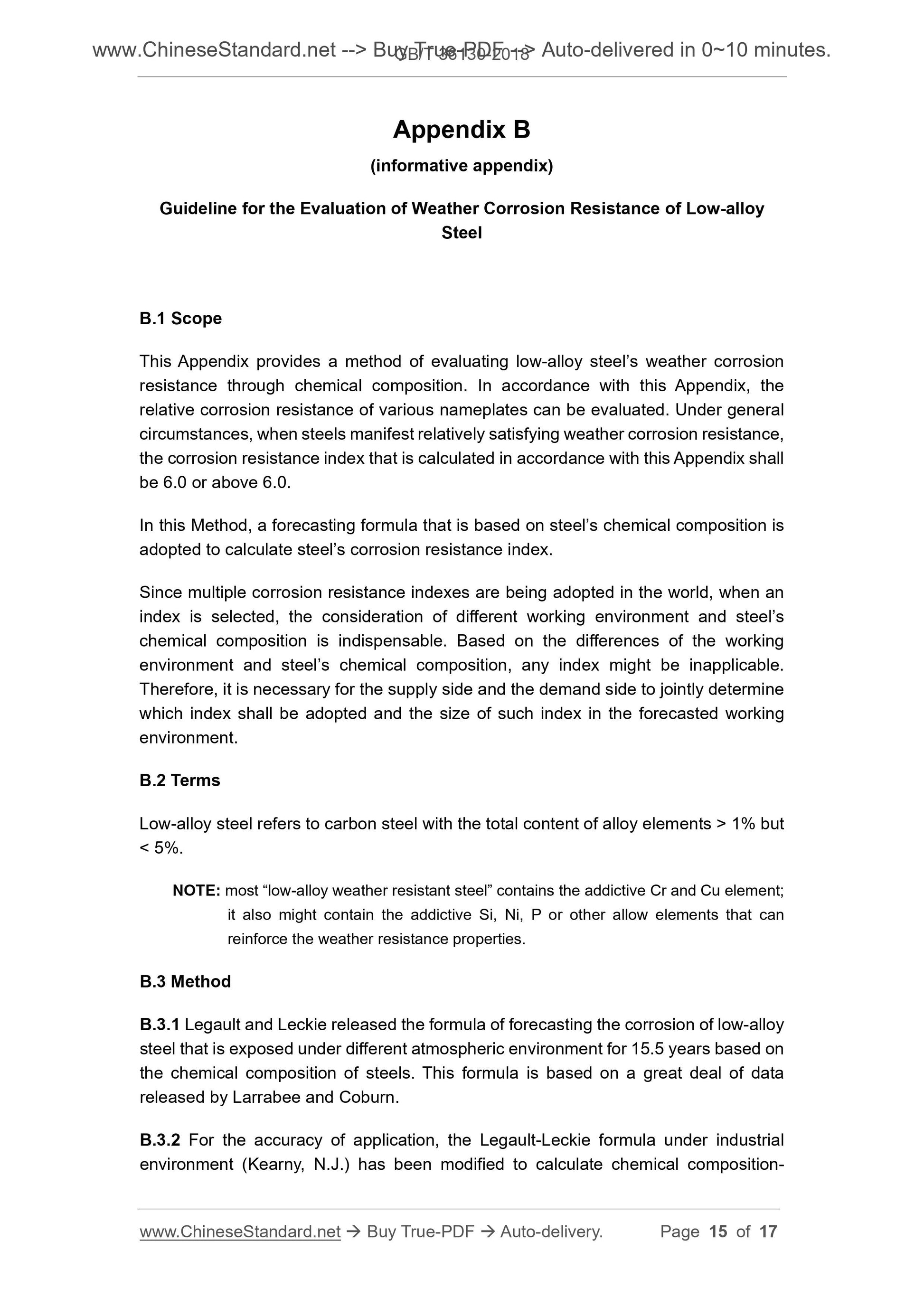1
/
of
7
www.ChineseStandard.us -- Field Test Asia Pte. Ltd.
GB/T 36130-2018 English PDF (GB/T36130-2018)
GB/T 36130-2018 English PDF (GB/T36130-2018)
Regular price
$140.00
Regular price
Sale price
$140.00
Unit price
/
per
Shipping calculated at checkout.
Couldn't load pickup availability
GB/T 36130-2018: Hot Rolled Steel Plate, Sheet and Strip for Tower Structural Purpose
Delivery: 9 seconds. Download (and Email) true-PDF + Invoice.Get Quotation: Click GB/T 36130-2018 (Self-service in 1-minute)
Newer / historical versions: GB/T 36130-2018
Preview True-PDF
Scope
This Standard specifies the classification, method of nameplate expression, content ofordering, dimension, appearance, weight, technical requirement, test method,
inspection rule, packaging, marking and certification of hot rolled steel plate, sheet and
strip for tower structural purpose.
This Standard is applicable to hot rolled steel plate, sheet and strip (hereinafter referred
to as steel plate and strip) for tower structural purpose (thickness ≤ 25.4 mm). Steel
plate and strip are mainly applied to manufacture tower structure for electricity and
communication; tower structure for decorative power, watchtower, lighting tower,
television tower and special purposes.
Basic Data
| Standard ID | GB/T 36130-2018 (GB/T36130-2018) |
| Description (Translated English) | Hot Rolled Steel Plate, Sheet and Strip for Tower Structural Purpose |
| Sector / Industry | National Standard (Recommended) |
| Classification of Chinese Standard | H46 |
| Classification of International Standard | 77.140.50 |
| Word Count Estimation | 12,117 |
| Date of Issue | 2018-05-14 |
| Date of Implementation | 2019-02-01 |
| Regulation (derived from) | National Standards Announcement No. 6 of 2018 |
| Issuing agency(ies) | State Administration for Market Regulation, China National Standardization Administration |
Share
